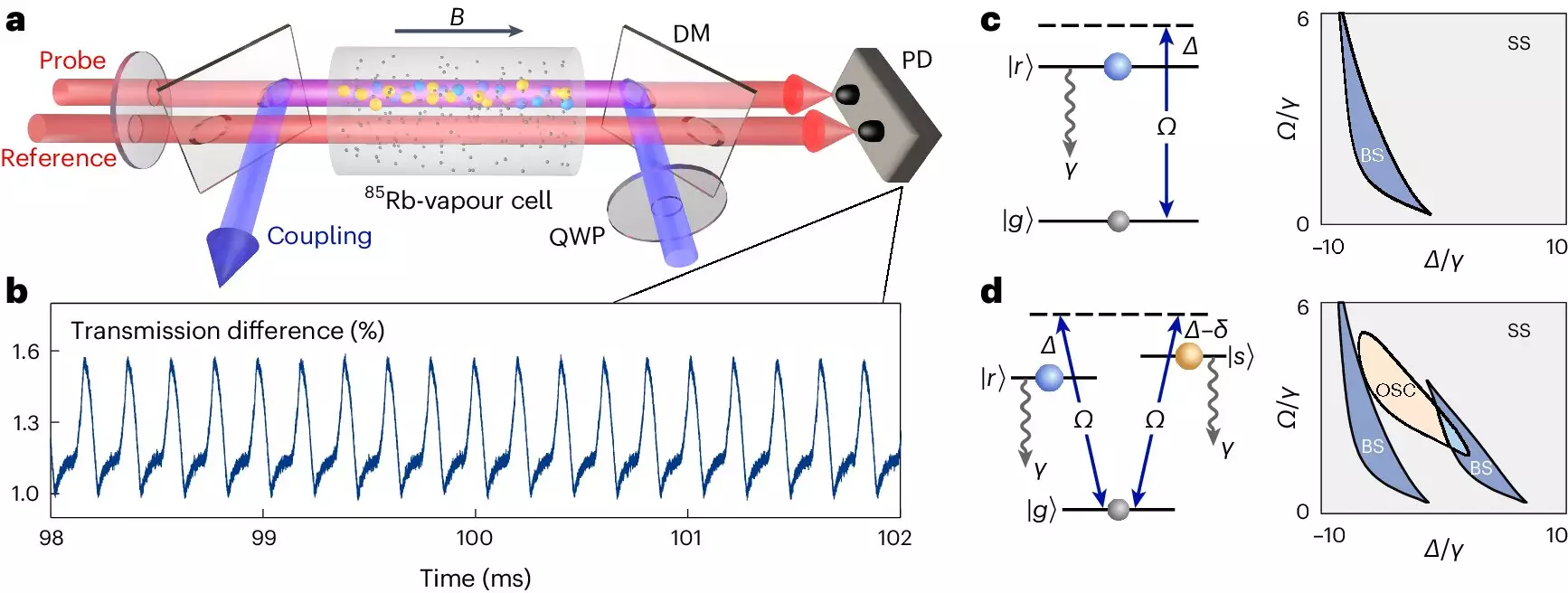Time crystals, an intriguing concept proposed by Nobel Prize winner Frank Wilczek in 2012, challenge the traditional norms of crystal structures by repeating themselves not in space, but in time. The idea of time crystals has sparked debates within the scientific community, with some dismissing them as impossible and others attempting to find ways to manifest them under specific conditions.
In a groundbreaking development, a team at Tsinghua University in China, in collaboration with TU Wien in Austria, successfully created a unique type of time crystal. This achievement, published in the journal Nature Physics, involved the use of laser light and Rydberg atoms with larger diameters than standard atoms. This experiment has opened up new avenues for research in the field of quantum physics and time crystal formation.
At the core of the concept of time crystals lies the idea of spontaneous symmetry breaking. Unlike the ticking of a clock, where each tick is predetermined by external factors, time crystals exhibit periodicity in the absence of external influences. Professor Thomas Pohl from the Institute of Theoretical Physics at TU Wien explains that time crystals generate rhythms independently, even though there are no inherent differences between different points in time.
The experimental setup involved shining laser light into a glass container filled with rubidium atoms prepared in Rydberg states. These giant atoms, with significantly larger electron shells, interacted with the laser light in a unique way, leading to spontaneous oscillations between different atomic states. This phenomenon resulted in regular patterns of light absorption, demonstrating the emergence of a time crystal.
The creation of time crystals presents a significant advancement in our understanding of quantum phenomena and spontaneous symmetry breaking. The self-sustained oscillations observed in the experiment hold great potential for technological applications, such as sensor development. Moreover, this research provides a platform for further exploration of time crystal behavior and their practical implications in various fields.
The discovery of time crystals marks a pivotal moment in the realm of quantum physics and crystallography. By challenging conventional notions of time and symmetry, researchers have unlocked a new avenue for studying complex quantum phenomena. The implications of time crystals extend beyond fundamental research to potential technological advancements, underscoring the importance of continued exploration in this fascinating field.



Leave a Reply